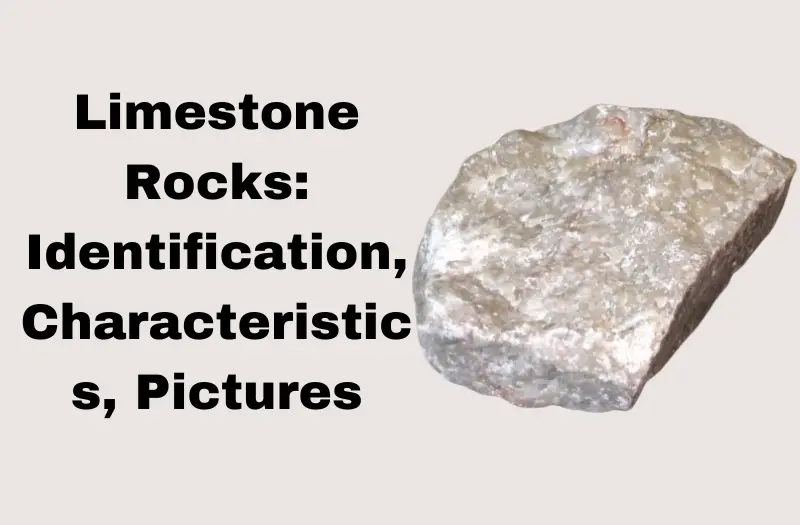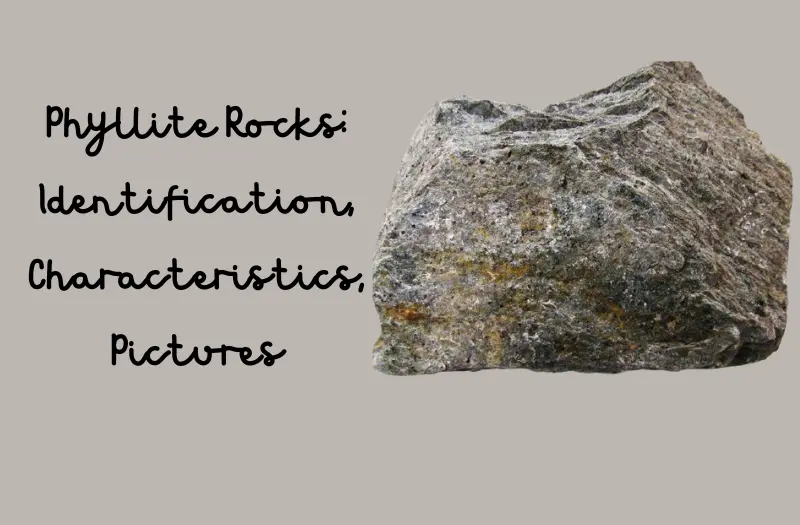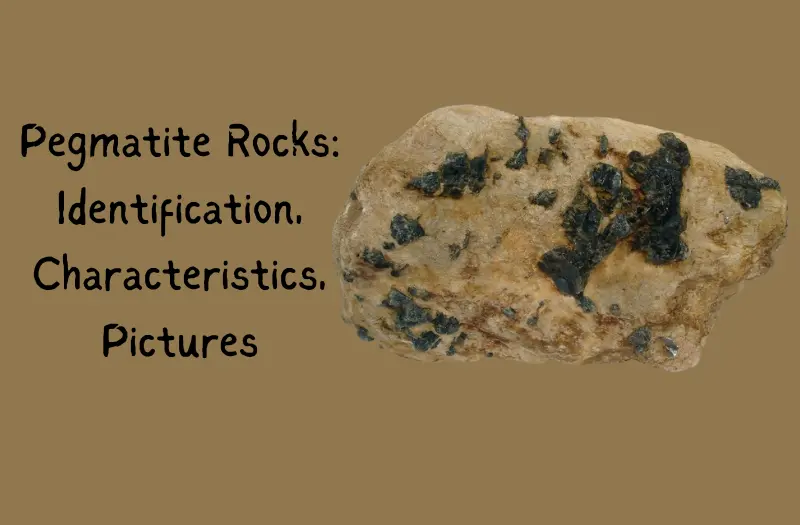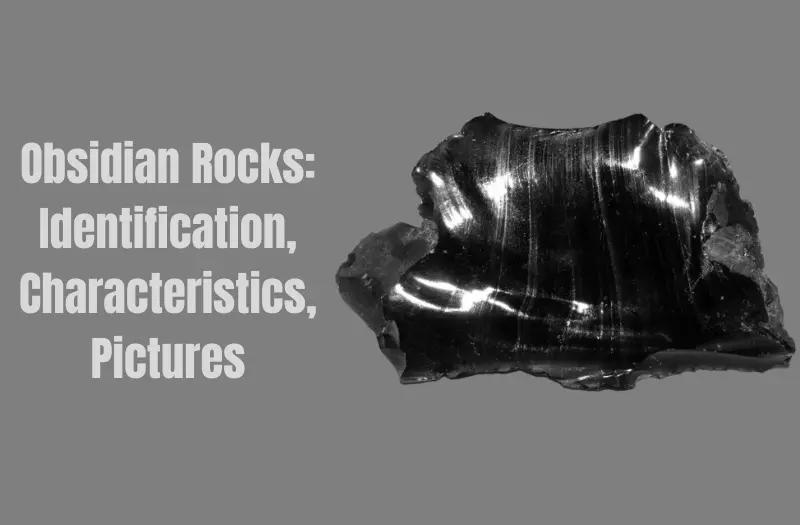When it comes to limestone rocks, identifying them and understanding their characteristics are essential for various fields. What makes limestone rocks unique lies not only in their appearance but also in their geological composition and environmental implications.
Exploring the intricate details of limestone rocks can provide valuable insights into their significance and applications in both natural and human-made environments.
Origins of Limestone Rocks
Limestone rocks are primarily formed through the accumulation of sedimentary materials over millions of years, predominantly composed of calcium carbonate. The geological history of limestone rocks dates back to ancient marine environments where the accumulation of organic remains, such as shells and coral fragments, combined with chemical precipitation to create the initial limestone deposits. These sediments underwent a series of compaction and cementation processes over time, eventually solidifying into the durable rocks we recognize today.
The formation processes of limestone rocks involve intricate interactions between biological, chemical, and physical factors. For instance, the gradual compression of sediments by overlying layers contributed to the lithification of limestone. Additionally, the infiltration of groundwater carrying dissolved minerals played a crucial role in cementing the sediment particles together. Through these complex geological mechanisms, limestone rocks emerged as enduring features of the Earth’s crust, showcasing the fascinating interplay of natural forces over millennia.
Types of Limestone
Emerging from diverse geological origins and formations, various types of limestone exhibit distinct characteristics and properties. Understanding the types of limestone is crucial in recognizing their geological significance and economic importance. Here are some common types:
- Chalk: Soft and porous limestone formed from the accumulation of microscopic algae skeletons. Often white or gray in color.
- Coquina: Comprised of fragmented shells and coral, giving it a grainy appearance. Typically used in construction due to its strength.
- Travertine: A banded, compact variety of limestone that forms near mineral springs. Known for its suitability in flooring and countertops.
- Marble: A metamorphic rock originating from limestone, known for its elegant appearance and widespread use in sculpture and architecture.
These various types of limestone formations play a crucial role in both the geological processes of the Earth and their economic significance through the extraction of limestone deposits for construction, agriculture, and other industries.
Also Read: Granodiorite Rocks: Identification, Characteristics, Pictures, and More
Physical Characteristics
Now, let’s talk about the physical characteristics of limestone rocks.
You’ll learn about the color and texture, as well as the density and hardness of these formations.
Understanding these aspects can provide valuable insights into the nature and composition of limestone rocks.
Color and Texture
Examining the color and texture of limestone rocks provides valuable insights into their physical characteristics. Limestone rocks exhibit a variety of color variations, ranging from creamy whites to sandy yellows, and even shades of gray and brown. The texture patterns found in limestone can be classified as fine-grained or coarse-grained, depending on the size of the particles that make up the rock.
As you observe these physical features, remember that color and texture can often indicate the formation process of the limestone rock. Keep in mind that variations in color and texture can also impact the durability and suitability of limestone for different applications.
- Limestone rocks showcase a spectrum of color variations.
- Texture patterns in limestone rocks can be fine-grained or coarse-grained.
- Color and texture provide clues about the formation process.
- Variations in color and texture affect the rock’s durability and suitability.
Density and Hardness
To understand the physical characteristics of limestone rocks, consider evaluating their density and hardness. Density analysis provides insight into the mass per unit volume of the rock, while hardness testing helps determine its resistance to scratching and abrasion. Limestone’s density typically ranges from 2.3 to 2.7 g/cm³, making it relatively light compared to other rocks. In terms of hardness, limestone ranks around 3 on the Mohs scale, indicating it is relatively soft and can be easily scratched. These physical properties are a result of limestone’s rock formation and geological history, showcasing how external factors have shaped its composition over time.
| Property | Description | Value |
|---|---|---|
| Density | Mass per unit volume | 2.3 – 2.7 g/cm³ |
| Hardness | Mohs scale | 3 |
Chemical Composition
Now, let’s explore the chemical composition of limestone rocks.
You’ll discover the elemental makeup and mineralogical properties that define these rocks.
Understanding these aspects can provide valuable insights into the formation and characteristics of limestone.
Elemental Composition
Understanding the elemental composition of limestone rocks is crucial for determining their properties and potential uses in various industries. Limestone’s chemical composition varies, but it primarily consists of calcium carbonate. The mineralogical properties of limestone rocks can affect their durability and suitability for specific applications.
- Key Points:
- Fossil preservation is often facilitated by the fine-grained nature of limestone.
- Color variations in limestone can be attributed to impurities present in the rock.
- The chemical composition of limestone influences its reaction to acids.
- Limestone’s mineralogical properties can impact its porosity and strength, affecting its use in construction and as a decorative stone.
Mineralogical Properties
The chemical composition of limestone rocks, specifically their mineralogical properties, plays a critical role in determining their durability and suitability for various applications in industries. Mineralogical properties refer to the specific minerals present in the limestone rocks and their arrangement.
Identification techniques such as X-ray diffraction and scanning electron microscopy are commonly used to determine the mineralogical composition of limestone samples. Limestone rocks are primarily composed of the mineral calcite or aragonite, both forms of calcium carbonate. Other minerals like quartz, clay minerals, and pyrite may also be present in varying amounts depending on the geological formations where the limestone was formed.
Understanding the mineralogical properties of limestone rocks is essential for assessing their quality and potential uses in construction, agriculture, and chemical industries.
Formation Process
As limestone rocks form, various mineral components gradually combine and solidify over millions of years. This formation process is crucial in understanding the geological significance of limestone.
Here are some key points to help you comprehend how limestone rocks are created:
- Deposition: Sediments such as shells, coral, algae, and sand accumulate on the ocean floor.
- Compaction: The weight of overlying sediments compresses the lower layers, squeezing out water and air.
- Cementation: Minerals like calcite, aragonite, and dolomite precipitate from groundwater, binding the sediment grains together.
- Metamorphism: Under heat and pressure, the limestone undergoes changes, transforming into a harder, crystalline rock.
This intricate process shapes the unique characteristics of limestone rocks, making them valuable resources for construction, agriculture, and even in environmental applications. Understanding how these rocks form provides insights into the Earth’s history and the forces that have shaped our planet over time.
Fossil Content
You’ll discover that limestone rocks often hold a treasure trove of fossils preserved within them. These fossils can range from ancient marine creatures to plant imprints, providing valuable insights into past environments.
Fossil Preservation in Limestone
Fossil preservation in limestone rocks reveals a rich history of ancient life forms embedded within their layers. Limestone is a remarkable medium for preserving fossils due to its unique chemical composition and formation process. Here are some key points about fossil preservation in limestone:
- Exceptional Detail: Limestone often preserves fossils with exceptional detail, including intricate features like soft tissues.
- Fossil Diversity: Limestone deposits can contain a wide variety of fossils, ranging from marine creatures to plants and even ancient microorganisms.
- Mineral Replacement: One common preservation method in limestone involves the gradual replacement of organic material by minerals, creating a fossilized replica.
- Fossil Age: Limestone fossils provide valuable insights into the ancient environments and organisms that existed millions of years ago.
Types of Fossils Found
In limestone rocks, a diverse array of fossils can be found, showcasing a wide range of ancient life forms and organisms. These fossils can be categorized into different types based on their characteristics and the organisms they represent. Common types of fossils found in limestone include marine invertebrates like brachiopods, crinoids, and corals, as well as cephalopods such as ammonites and nautiloids.
Plant fossils like tree branches and leaves are also sometimes preserved in limestone formations. The preservation techniques responsible for these fossils’ remarkable condition include mineral replacement, where minerals gradually replace the organic material, and carbonization, where the organism’s carbon residue forms an imprint. These preservation methods help retain intricate details of ancient life forms within limestone rocks.
Importance of Fossil Analysis
Examining the fossil content within limestone rocks provides valuable insights into the ancient ecosystems and biodiversity of the past. Fossil preservation in limestone rocks is a crucial aspect for understanding the history of life on Earth. Here’s why analyzing fossils found in limestone is essential:
- Interpreting past environments: Fossils in limestone can help reconstruct ancient landscapes and climates.
- Tracing evolutionary patterns: The study of fossils aids in understanding the development of species over time.
- Determining species interactions: Fossil analysis reveals how organisms interacted in prehistoric ecosystems.
- Contributing to paleontological significance: Limestone fossils play a significant role in advancing our knowledge of past life forms and their adaptations.
Color Variations
When observing limestone rocks, notice the diverse array of color variations that can provide valuable insights into their composition and formation. The color of limestone rocks is influenced by various factors, including their chemical composition and the presence of impurities. Here are some common color variations found in limestone rocks:
| Color | Formation Process |
|---|---|
| White | Pure limestone with high calcium content |
| Gray | Presence of organic matter or fossil remains |
| Beige | Sand and mud deposits |
These color variations can indicate the mineralogical properties of the limestone, such as the types of sediments that were present during its formation. For example, white limestone often contains a high concentration of calcium carbonate, while gray limestone may indicate fossil preservation. By observing these color variations, geologists and researchers can gain valuable insights into the history and composition of limestone rocks.
Porosity and Texture
Notice how the color variations in limestone rocks can hint at their mineralogical properties; now, explore how porosity and texture play a crucial role in understanding the characteristics of these rocks.
Porosity analysis and texture variations are key factors in identifying and characterizing limestone rocks. Here are some essential points to consider:
- Porosity Analysis:
- Porosity refers to the amount of empty space within the rock.
- It’s crucial for understanding how fluids and gases can move through the rock.
- Porosity can vary greatly among different limestone formations.
- High porosity can indicate greater permeability in the rock.
- Texture Variations:
- Texture relates to the size, shape, and arrangement of mineral grains within the rock.
- Limestone can exhibit a range of textures, from fine-grained to coarse-grained.
- Textural variations can provide insights into the formation history of the rock.
- Different textures can influence the rock’s strength and durability.
Understanding porosity and texture variations in limestone rocks is essential for various applications, from construction to geological studies.
Durability and Weathering
When it comes to limestone rocks, you’ll want to consider their durability and how they weather over time. Understanding the durability of limestone can give you insight into how it will hold up in different conditions.
Additionally, exploring the effects of weathering on limestone can provide valuable information on its long-term sustainability.
Durability of Limestone Rocks
Limestone rocks exhibit varying degrees of durability in response to weathering processes, impacting their long-term structural integrity. When assessing the durability of limestone, factors like weathering resistance and strength analysis play a crucial role.
Understanding the long-term durability and conducting structural integrity assessments are essential to predict the rock’s performance over time accurately. Here are some key points to consider:
- Weathering resistance is a significant factor that influences how well limestone holds up against environmental elements.
- Conducting strength analysis helps in determining how the rock will withstand external forces and stresses.
- Long term durability assessments provide crucial insights into the expected lifespan of limestone structures.
- Evaluating structural integrity is necessary to ensure the stability and safety of limestone constructions.
Weathering Effects on Limestone
Understanding the impact of weathering on limestone rocks is crucial for assessing their durability and long-term stability. Chemical weathering processes, such as the dissolution of limestone by acidic rainwater, can lead to erosion and the breakdown of the rock over time.
This environmental degradation can weaken the structural integrity of limestone formations, making them more susceptible to physical weathering forces like wind and water. Conservation efforts are essential to protect limestone landscapes from accelerated weathering, preserving their natural beauty and geological significance.
Implementing measures to mitigate the effects of chemical weathering, such as reducing air pollution that causes acid rain, can help maintain the integrity of limestone rock formations for future generations to appreciate.
Common Applications
Numerous industries utilize limestone rocks for a variety of practical applications, showcasing the rock’s versatility and durability. Limestone’s unique properties make it a valuable resource in various fields. Some common applications include:
- Construction Material: Limestone is widely used as a key ingredient in concrete, mortar, and asphalt for construction projects due to its strength and durability.
- Landscaping Uses: Landscapers use limestone for pathways, retaining walls, and decorative features in gardens and outdoor spaces, adding a touch of elegance to the surroundings.
- Chemical Reactions: Limestone plays a vital role in neutralizing acidic soils and controlling pH levels in industrial processes through chemical reactions, making it an essential component in various industries.
- Weathering Processes: Due to its resistance to weathering, limestone is used in coastal defenses and as a building material in regions prone to erosion, providing long-lasting protection against natural elements.
Environmental Impact
When considering the environmental impact of limestone rocks, it’s crucial to evaluate their role in various ecosystems and human activities.
Limestone mining can have significant ecological impacts, affecting ecosystem health and biodiversity. It can lead to habitat destruction and fragmentation, altering the natural landscape and potentially endangering species that rely on these habitats.
To mitigate these effects, it’s essential to prioritize environmental conservation and implement sustainable practices in limestone mining operations.
Associated Hazards
Limestone mining operations can pose various hazards to both workers and nearby communities. It’s crucial to address these risks to ensure the safety of individuals and the surrounding environment. Here are some key points to consider:
- Safety Precautions: Implementing strict safety protocols, providing adequate training, and ensuring the proper use of personal protective equipment are essential to minimize accidents and injuries in limestone mining operations.
- Environmental Concerns: Mining activities can lead to habitat destruction, soil erosion, and water contamination. It’s vital to monitor and mitigate these environmental impacts through responsible mining practices.
- Risk Assessment: Conducting thorough risk assessments regularly can help identify potential hazards and develop mitigation strategies to prevent accidents and ensure a safe working environment.
- Conservation Efforts: Engaging in reclamation projects and restoring mined areas can help mitigate the environmental impact of limestone mining and promote conservation efforts for the ecosystem.
Preservation and Restoration
In order to ensure the long-term sustainability of limestone mining operations, prioritizing preservation and restoration efforts is imperative. When it comes to preserving limestone formations, employing effective preservation techniques is crucial. This involves strategies such as controlled blasting to minimize damage to the surrounding rock structures and implementing erosion control measures to prevent degradation of the limestone over time. Additionally, utilizing proper sealing and waterproofing methods can help protect the limestone from weathering and chemical corrosion.
On the other hand, restoration methods play a vital role in rejuvenating limestone areas that have been previously degraded. Techniques like reforestation can help restore the natural habitat surrounding limestone quarries, promoting ecological balance. Moreover, using innovative technologies like bio-cementation can aid in reinforcing damaged limestone surfaces, enhancing their durability and longevity. By combining preservation and restoration practices, limestone mining operations can minimize their environmental impact and contribute to the sustainable use of this valuable resource.
| Preservation Techniques | Restoration Methods | Benefits |
|---|---|---|
| Controlled blasting | Reforestation | Minimizes environmental impact |
| Erosion control measures | Bio-cementation | Restores natural habitat |
| Sealing and waterproofing | Surface reinforcement | Enhances durability |
Interesting Facts
Exploring the geological wonders of limestone rocks reveals fascinating insights into their formation and unique properties. Limestone, with its rich history and diverse uses, holds several interesting facts that make it a remarkable natural material. Here are some intriguing details for you to delve into:
- Geological formations: Limestone rocks often contain fossilized remains of ancient marine creatures, providing valuable insights into past ecosystems.
- Natural wonders: The formation of stunning limestone caves and caverns, such as the Carlsbad Caverns in the United States, showcases the beauty and complexity of nature’s processes.
- Historical significance: Throughout history, limestone has been used in iconic structures like the Great Pyramid of Giza, emphasizing its enduring role in architecture and construction.
- Cultural uses: Limestone’s versatility extends to cultural applications, as seen in the intricate carvings of temples and statues in places like Cambodia’s Angkor Wat, highlighting its importance in artistic expression.
Frequently Asked Questions
How Does the Presence of Limestone Rocks Affect the Local Ecosystem and Wildlife?
When limestone rocks are present, they can impact the local ecosystem by influencing soil pH and providing habitat for certain species. Wildlife effects can include unique adaptations to the limestone environment. Conservation measures may involve habitat restoration efforts to maintain biodiversity.
Are There Any Unique Cultural or Historical Significance Associated With Certain Limestone Formations?
Limestone formations hold unique cultural and historical significance. They have been used in architecture, art, and ancient rituals. Their presence in various monuments and sacred sites showcases the enduring influence of limestone in human history.
Can Limestone Rocks Be Used as a Sustainable Building Material Alternative?
Limestone rocks can be a sustainable construction choice due to their abundance and durability. Benefits include thermal properties and aesthetic appeal. However, environmental impact from quarrying and conservation efforts are needed to protect ecosystems affected by extraction.
Are There Any Potential Health Risks Associated With Prolonged Exposure to Limestone Dust or Particles?
Exposure to limestone dust can pose health risks like respiratory issues. Prolonged inhalation may lead to lung problems. Be cautious around dust particles to prevent potential harm. Consider environmental impact when working with limestone to stay safe.
How Do Geologists Study and Analyze the Formation and Composition of Limestone Rocks in Different Regions Around the World?
To study limestone rocks, geologists analyze their formation and composition in various regions globally. They examine the structure and mineral content to understand geological processes. By analyzing these aspects, researchers can gain insights into the history and characteristics of limestone deposits.
Conclusion
Overall, limestone rocks are a common type of sedimentary rock that form from the accumulation of marine fossils and sediment over time. They’re typically identified by their light color and high calcium carbonate content.
Limestone rocks have a wide range of uses, from building materials to agricultural applications. Understanding their characteristics and formation process can help us appreciate their importance in geology and the environment.




Leave a Reply